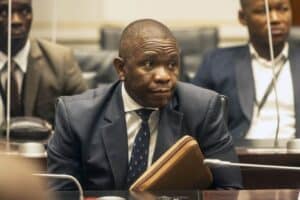Our rich legacy, heritage and hard-fought liberation should not be allowed to be confined to the periphery of history.

The reopening by Justice and Correctional Services Minister Ronald Lamola of the inquest into the death of anti-apartheid activist Neil Aggett over 30 years ago should be applauded.
While the revival may go a long way in closing one of the saddest chapters in the history of South Africa’s brutal past, it is an indictment on the ANC-led government that not much has been done by way of preserving the legacy of selfless martyrs like Aggett.
While it took the post-apartheid government quite some time to recognise and officially celebrate slain black consciousness leader Steve Biko through street names and a statue, the same cannot be said of Aggett, Ahmed Timol, Wellington Tshazibane, Elmon Malele, Matthews Mabelane, Ernest Dipale, Stanza Bopape and Clayton Sithole – who died mysteriously while in detention at the same infamous John Vorster Square.
It is about time they are celebrated through history books, street names and bronze sculptures – a brief that could reside in the education, arts and culture departments.
In looking back at the era of Aggett, activists like him kept the fires burning at a time when there was not much hope that SA would ever be free, with Nelson Mandela becoming the country’s first democratically-elected president.
As prime minister, Balthazar Johannes “BJ” Vorster, who held the reins from 1966 to 1978, was no different to his predecessor – apartheid architect Hendrik Verwoerd.
In one of his famous quotes, Vorster once remarked: “The policy of separate development can be tested by any unprejudiced person against the requirements of Christianity and morality. For conditions such as those in South Africa there is no other policy.
“Without it, you will have chaos and ultimately bring about the downfall of all population groups here in South Africa. We instituted the policy of separate development, not because we considered ourselves better than others, not because we considered ourselves richer or more educated than others.
“We instituted the policy of separate development because we said we were different from others. We have our land and we, and we alone will have authority over it.”
In establishing the Bureau of State Security, Vorster told parliament that there would be a dramatic increase in security expenditure. During Vorster’s reign, thousands were detained, banned or placed under house arrest, with security police given a free hand to torture detainees.
When deaths in detention occurred, Vorster turned a blind eye – something which suggested a stamp of approval from the top. Detained political activists were not allowed any contact with family members, lawyers or access to any outside help.
They were cut off from the world during incarceration which could last from a few hours to months. Between 1963 and 1990, at least 73 political activists are said to have died in detention. Between 1970 and 1990, eight political activists are known to have died during or as a result of their detention at John Vorster Square.
As the downfall of apartheid is attributed to battles fought from many fronts here and abroad, the important contribution of those who died at John Vorster should never be forgotten. Our rich legacy, heritage and hard-fought liberation should not be allowed to be confined to the periphery of history.

Brian Sokutu.
For more news your way, download The Citizen’s app for iOS and Android.






